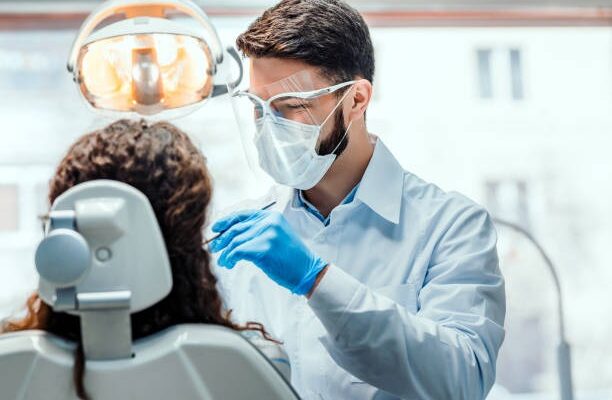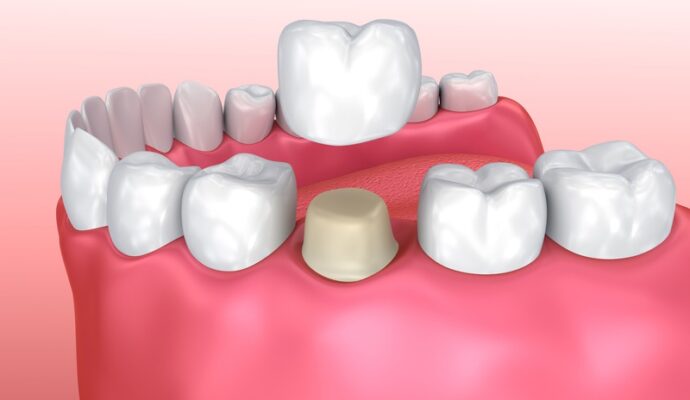When it comes to oral health, the role that dental professionals play is immense. While most people are familiar with general dentists, few understand what periodontists do and how they come into the picture, especially when dealing with gum disease. Here, we will delve into how a periodontist treats gum disease compared to a general dentist. So, if you’re wondering which one is best suited for your concerns, read on.
Understanding Gum Disease
Before discussing the treatment differences, it’s essential to understand gum disease. Gum disease, also known as periodontal disease, is an infection of the gums surrounding the teeth. It’s one of the most common causes of tooth loss in adults. Awareness of its symptoms—such as swollen or bleeding gums, persistent bad breath, and loose teeth—can help in early detection and management.
The Role of a General Dentist
General dentists are your primary care providers for oral health. They handle routine check-ups, cleanings, fillings, and sometimes even handle simple extractions. When it comes to gum disease, general dentists can effectively manage mild cases through routine cleanings, scaling, and root planing.
-
Routine Cleanings: These appointments help remove plaque and tartar buildup that can lead to gum disease.
-
Scaling and Root Planing: This deep-cleaning procedure targets below the gum line to remove plaque and tartar from the tooth root.
For more complex cases of gum disease, your general dentist might refer you to a specialist for advanced care.
Meet the Periodontist
While a general dentist can manage many oral health issues, a periodontist in San Francisco specializes in treating severe gum issues and more advanced periodontal diseases. Periodontists undergo extensive training beyond dental school to become experts in identifying and treating complexities related to the soft tissue and bone supporting the teeth.
Advanced Treatments by Periodontists
When gum disease progresses to more than a mild condition, it often requires more advanced treatments than what a general dentist provides. A periodontist typically manages these.
Surgical Treatments
-
Flap Surgery: Often necessary when the tissue around the teeth is unhealthy and can’t be repaired with non-surgical options.
-
Bone Grafts: These are procedures where new bone or bone-like material is placed to help restore lost bone in the jaw.
-
Guided Tissue Regeneration: This technique stimulates bone and gum tissue growth, helping rebuild areas destroyed by periodontal disease.
Periodontists are trained to perform these surgeries and understand the intricate balance required between the gums and bone to achieve optimal oral health.
Laser Treatments
One of the newer advances in treating gum disease is laser technology. Lasers can effectively remove inflamed gum tissue and reach areas that traditional methods might miss. The minimally invasive nature of laser treatments often results in less bleeding and faster healing times.
How Prevention Plays a Role
Preventive care is essential in managing gum disease, whether you are seeing a general dentist or a periodontist. Both professionals emphasize the importance of oral hygiene practices such as brushing, flossing, and routine dental check-ups.
-
Regular Check-ups: These can help catch gum disease in its early stages when it’s easier to treat.
-
Proper Oral Hygiene: Brushing twice daily and flossing daily to remove plaque.
-
Antimicrobial Mouthwash: Using mouthwash can help reduce plaque and control gingivitis.
Keeping gum disease at bay is a proactive effort requiring commitment from the patient and guidance from dental professionals.
When to Consult a Specialist
Knowing when to see a periodontist is key in managing gum disease. If your gum disease is not improving with the care provided by your local dentist, or if you notice worsening symptoms such as persistent gum soreness or teeth starting to shift, it might be time to consult a specialist. Early intervention by a periodontist can prevent further complications such as tooth loss or more invasive treatments later on.
What to Expect at a Periodontist’s Office
When you’re referred to a periodontist, it’s natural to wonder what that first visit will be like. Here’s what you can generally expect:
Comprehensive Exam
A periodontist will conduct a thorough examination of your mouth, which may include:
-
Your medical and dental history
-
Measuring the depth of pockets between your teeth and gums
-
An assessment of any signs of infection or inflammation
-
Potential x-rays to evaluate the status of the bone below your gum line
This initial assessment informs the treatment plan, tailored to your specific needs.
Developing a Treatment Plan
Based on the findings, the periodontist will work with you to develop a treatment plan. This could include non-surgical methods, surgical interventions, or ongoing maintenance strategies to manage your gum health effectively.
Combining Forces for Better Outcomes
Sometimes, achieving optimal oral health means working with both a general dentist and a periodontist. They complement each other in providing the care necessary for your unique situation.
A general dentist might handle routine cleanings and basic care, while referral to a periodontist ensures that more severe issues are treated effectively. This collaborative approach ensures a comprehensive care plan.
The Importance of Communication
Clear communication between you, your general dentist, and the periodontist is vital. This cooperation helps ensure everyone is on the same page regarding your treatment and preventive strategies. Understanding your treatment plan and trusting the professionals you’re working with can make all the difference.
Choosing the best dentist to handle the less complex needs of gum care means ensuring a seamless referral process to a specialist when necessary. Your oral health is a collaborative effort, and picking a dentist that aligns well with your healthcare philosophy can positively influence outcomes.
Why Periodontal Maintenance is Key
Once treatment for gum disease is complete, ongoing maintenance is necessary to prevent recurrence. This may include specialized cleanings every few months, incorporating specific at-home care strategies, and regular visits to the dental professionals managing your care.
Incorporating lifestyle changes, such as quitting smoking, eating a balanced diet, and managing stress, can substantially impact your gum health.
The Benefits of Early Detection
The earlier gum disease is detected, the more manageable and less invasive treatment can be. Regular dental visits are vital in catching gum issues early before they necessitate significant intervention.
Final Thoughts
Understanding the difference between the roles and treatments offered by periodontists and general dentists is crucial in effectively managing gum disease. While your local dentist can manage many gum issues, knowing when to seek specialized care from a periodontist ensures the best outcomes for your oral health. Whether managing gum disease or aiming to prevent it, integrating regular check-ups and maintaining good oral hygiene can safeguard your smile for years to come.




